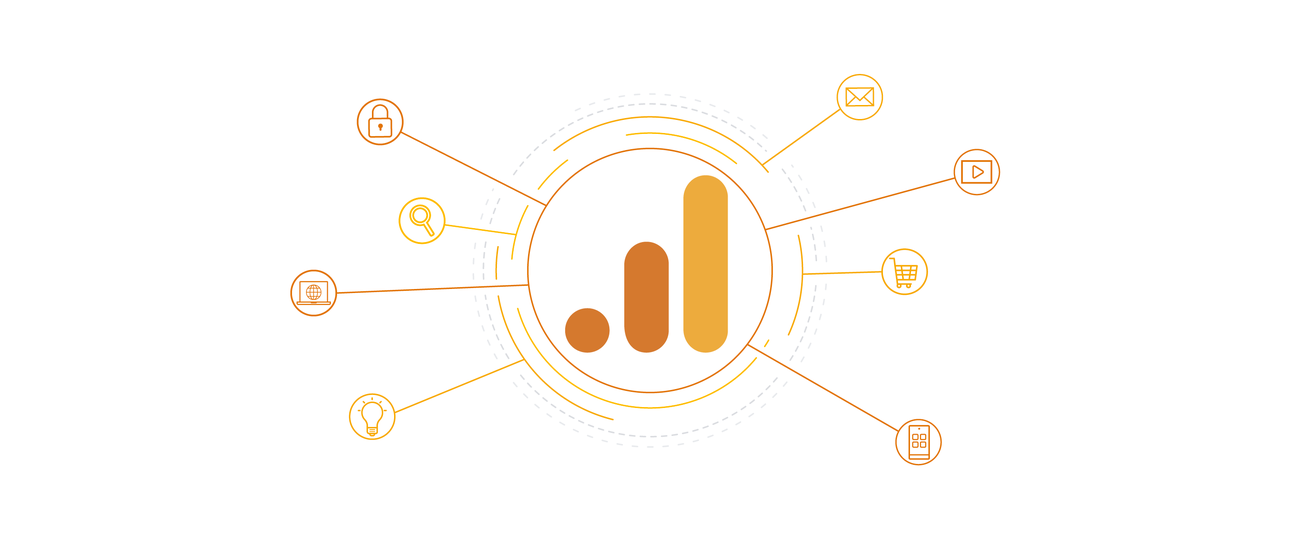Discover When Does the Google Analytics Tracking Code Send an Event Hit to Analytics and Why It Issues
Discover When Does the Google Analytics Tracking Code Send an Event Hit to Analytics and Why It Issues
Blog Article
Master Site Insights With Accurate Google Analytics Monitoring Code
The efficient utilization of Google Analytics pivots on the exact application of its tracking code, an essential step often forgotten by web site proprietors. What are the typical pitfalls that could weaken your tracking efforts, and exactly how can you guarantee precision in your technique?
Recognizing Google Analytics Essentials
Google Analytics is a vital tool for web site owners and marketing experts, giving indispensable understandings right into user habits and website efficiency. At its core, Google Analytics collects data concerning visitors to a web site, allowing customers to evaluate metrics such as website traffic resources, user involvement, and conversion rates. Comprehending these principles is critical for optimizing a web site's performance and enhancing customer experience.
The platform employs cookies to track interactions, tape-recording information such as web page sights, session durations, and bounce prices. This details is accumulated and offered via personalized control panels, enabling users to imagine fads with time. Key efficiency indicators (KPIs) can be monitored, such as the total number of customers, new versus returning site visitors, and the geographic circulation of the target market.
Additionally, Google Analytics provides division attributes, allowing individuals to isolate specific traffic resources or customer demographics for even more targeted analysis. By grasping these fundamental aspects, web site proprietors can make enlightened decisions concerning content approach, advertising and marketing projects, and overall site enhancements. Eventually, understanding Google Analytics essentials is crucial for leveraging data to drive growth and achieve service objectives properly.
Setting Up Your Monitoring Code

Replicate the given monitoring code and paste it right into the HTML of your website. This ensures that the tracking code lots before any kind of various other content, permitting it to capture data accurately.
After setup, validate that the monitoring code is operating correctly by utilizing Google Tag Assistant or the Real-Time records in Google Analytics - when does the google analytics tracking code send an event hit to analytics?. This step is necessary to verify that your data collection is energetic and exact, setting the foundation for informative evaluation
Common Monitoring Code Issues
This might take place when the monitoring code is placed in the wrong section of the website's HTML, frequently leading to absent or incomplete information. Additionally, having numerous instances of the monitoring code on a single page can result in filled with air metrics, as individual communications may be counted extra than once.
Another problem develops from the usage of ad blockers, which can stop the tracking code from executing altogether, thus skewing information. when does the google analytics tracking code send an event hit to analytics?. Furthermore, failure to set up filters properly can result in the exclusion of essential web traffic resources or the addition of undesirable referral spam, distorting the information collected
Site proprietors may likewise forget the significance of tracking code updates, especially when migrating to Google Analytics 4 (GA4) from Universal Analytics. Lastly, inadequate testing before launching adjustments can lead to undiscovered mistakes in the monitoring code, better making complex data dependability. Addressing these typical problems is important for guaranteeing exact monitoring and informative analytics.
Analyzing Website Information Effectively
Accurate information collection is only the initial step in leveraging Google Analytics; the real worth hinges on properly examining that data to drive enlightened decision-making. To accomplish this, it is necessary to identify key efficiency signs (KPIs) that line up with your organization objectives. Emphasis on metrics such as conversion prices, customer engagement, and traffic resources, as these will certainly offer understandings into customer behavior and the general efficiency of your website.
Making Use Of Google Analytics' division attributes enables a much deeper understanding of your target market. By damaging down data into particular demographics, behaviors, and website traffic channels, you can uncover fads and patterns that notify targeted methods. Carrying out custom-made records and dashboards can simplify this procedure, allowing fast access to relevant data.
Moreover, frequently assessing data about his fads in time assists to recognize abnormalities and chances for renovation. Make use of visualization devices to present information in a conveniently absorbable format, helping with extra reliable interaction with stakeholders. Eventually, the capability to assess web site information properly empowers companies to make tactical choices that boost user experience, enhance advertising efforts, and drive development.

Best Practices for Accurate Tracking
Executing effective tracking methods is critical for getting trustworthy data in Google Analytics. To guarantee exact monitoring, begin by appropriately setting up the Google Analytics tracking code on every web page of your site. This can be accomplished with a tag supervisor or by directly installing the code right into the HTML.
Next, configure your Google Analytics account to exclude inner web traffic. This can be done by establishing filters that identify and remove visits from your company's IP address, thereby avoiding manipulated information. Additionally, page use event monitoring to keep track of specific user communications, such as downloads or video plays, which typical page sights may forget.
Routinely examine your tracking setup to validate that all features, such as objectives and ecommerce monitoring, are operating correctly. Develop a constant naming convention for your occasions and projects to help with much easier reporting and evaluation.
Finally, think about leveraging UTM specifications for projects to acquire understandings into the efficiency of different advertising efforts. By adhering to these best techniques, you can improve the accuracy of your information collection and analysis, inevitably causing more informed decision-making for your site.
Final Thought
By making sure the monitoring code is properly put and on a regular basis investigated, website owners can catch crucial user communication data, hence assisting in the identification of crucial performance indications. Eventually, a durable monitoring structure enhances the capability to drive engagement and enhance general site efficiency.

Insufficient testing prior to releasing modifications can result in unnoticed mistakes in the monitoring code, additionally complicating data dependability.Carrying out reliable monitoring techniques is essential for obtaining trustworthy information in Google Analytics. By ensuring the tracking code is appropriately placed and routinely audited, site proprietors can capture crucial user communication information, therefore helping with the identification of key performance indicators.
Report this page